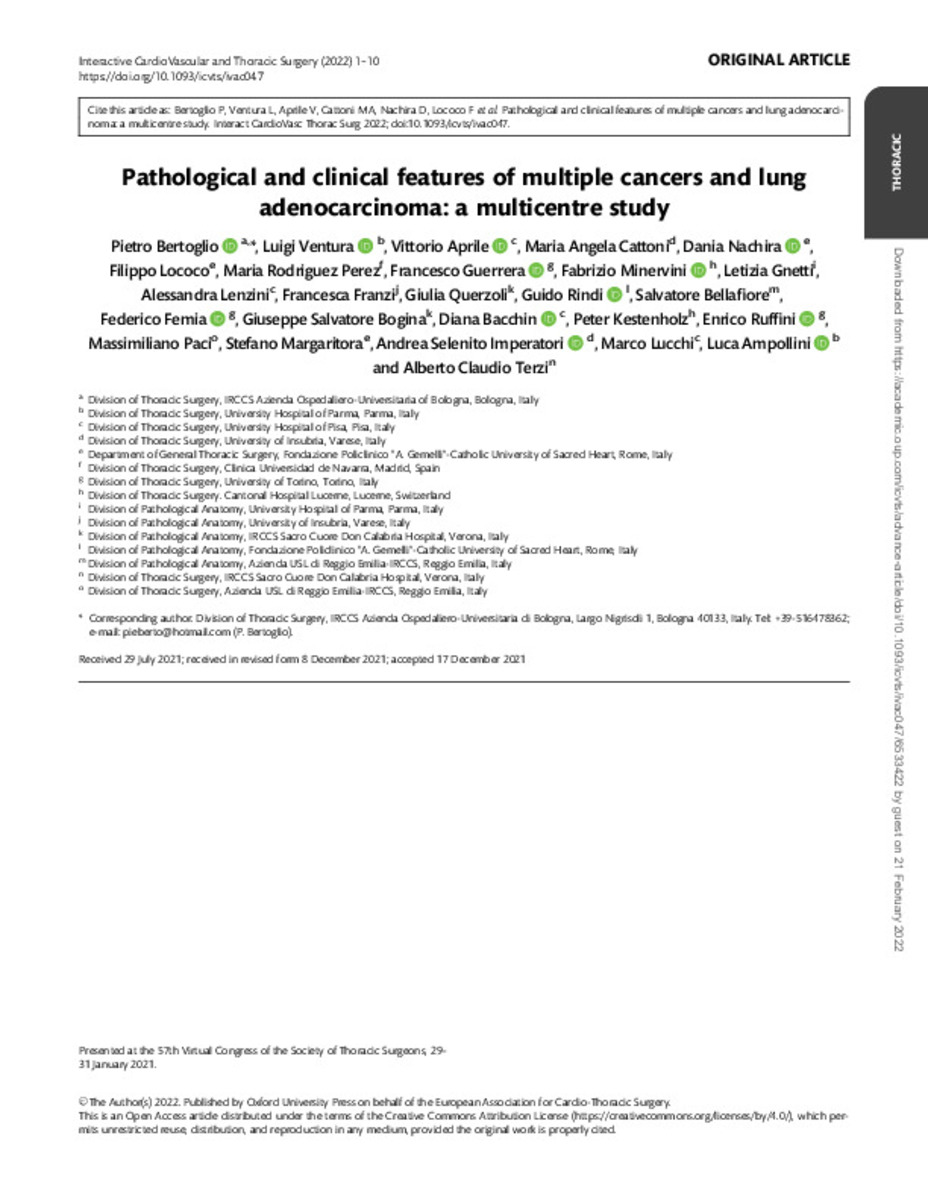Pathological and clinical features of multiple cancers and lung adenocarcinoma: a multicentre study
Keywords:
Thoracic surgery
Lung cancer
Adenocarcinoma subtype
Multiple cancers
Lung adenocarcinoma
Editorial note:
© The Author(s) 2022. Published by Oxford University Press on behalf of the European Association for Cardio-Thoracic Surgery
Citation:
Rodríguez-Pérez, M.C. (María C.); Bertoglio, P. (Pietro); Ventura, L. (Luigi); et al. "Pathological and clinical features of multiple cancers and lung adenocarcinoma: a multicentre study". Interactive CardioVascular and Thoracic Surgery. 35 (1), 2022, 1 - 9
Statistics and impact
0 citas en

0 citas en

Items in Dadun are protected by copyright, with all rights reserved, unless otherwise indicated.







